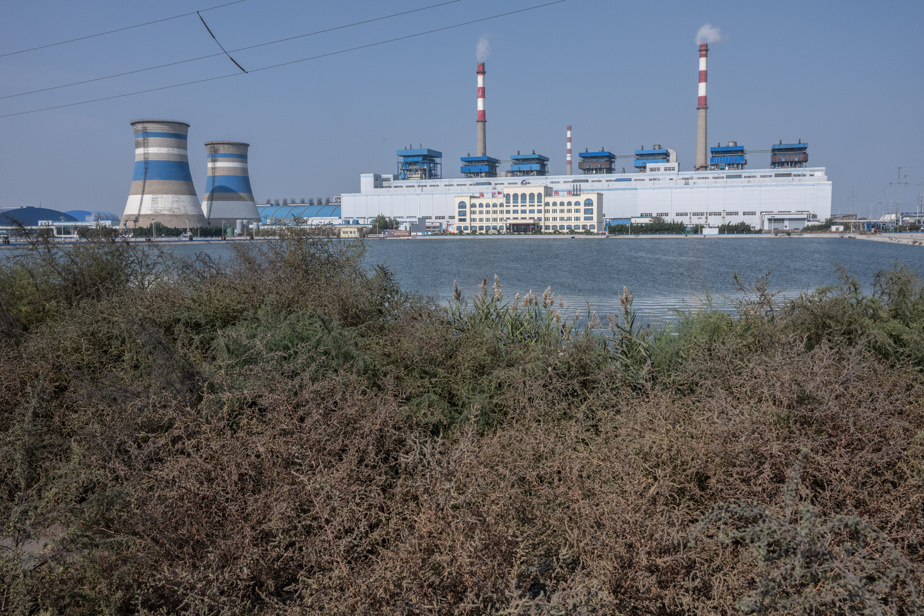Clean electricity has never been more abundant. Wind and solar energy have taken off over the past 20 years, faster than expected. But not fast enough to stop the proliferation of coal and gas power plants.
As global demand for electricity grows faster than the supply of green energy, fossil fuels are filling the gap.
This dynamic has driven up carbon emissions from the power sector at a time when scientists say they must decline – and quickly – to avoid dangerous levels of global warming.
This demand comes mainly from countries like China and India, which rely on coal, wind and solar power to fuel their meteoric economic growth. But many industrialized countries are not abandoning fossil energy fast enough to achieve their greenhouse gas reduction targets.
Despite this, according to many experts, the global peak of fossil energy will occur within a few years. It is already falling in the United States and Europe and experts believe that China, by far the largest electricity producer in the world, will soon begin to reduce the use of coal in its power plants.
The future of the planet will largely depend on what happens next.
To keep global temperature rise “well below” 2°C (ideally 1.5°C, the COP21 global goal), we must reach peak fossil fuels, then rapidly substitute carbon-free electricity – wind, solar, etc. – electricity from fossil sources. The planet has already warmed by around 1.2°C since the pre-industrial era.
This will be the central question at the global climate summit starting on November 30.
The stakes are enormous.
Electricity production is already the largest source of CO2 in the world. However, decarbonization projects in many sectors of the global economy – transport, buildings, industry – also rely on the use of cleaner energy.
The evolution of electricity production over recent decades in major electricity-producing countries – developed or rapidly developing – helps explain the current situation and shows future climate challenges.
In the United States and much of Europe, electricity generation from fossil fuels, especially coal, has been declining for years. This is even the case in Australia, a country dependent on coal.
Renewable energies have a lot to do with it.
Last year, 22% of the European Union’s electricity came from sun and wind, up from less than 1% 20 years ago. The United States generated 15% of its electricity from solar and wind in 2022, slightly more than the global average.
The rise of cheap green energy has enabled the decline of coal in Europe. Just like in the United States, where natural gas – which generates less CO2 than coal – has also played a key role.
The decline in overall electricity demand has also contributed to the decline of fossil energy.
In the 20th century, electricity consumption skyrocketed in North America and many countries in Europe. It plateaued, or even declined, in the 2000s, notably thanks to improved energy efficiency and the relocation of heavy industry.
Yet neither the United States nor the European Union are on track to meet their 1.5°C targets. These two major electricity producers recently passed laws aimed at boosting renewable energy, but economic conditions and other challenges threaten to slow the transition even when it needs to accelerate, experts warn.
The trend seems very different in rapidly developing countries, especially China.
In 2010, China overtook the United States as the world’s largest electricity producer and now produces nearly a third of the world’s electricity. (Output per person is still much lower than in the United States.)
For decades, its growing demand for electricity has been met by coal, the dirtiest fuel. Coal use continues to grow, although at a slower pace, even as China has significantly developed its wind and solar capacities.
Today, China’s electricity sector is nearing a turning point.
Within a few years, energy experts say, green electricity will advance enough to begin to supplant coal even in China. Given the country’s huge share of the global total, China’s coal peak will likely be the global peak.
After this summit, we do not know how quickly the use of coal and the resulting emissions will decrease. In a recent agreement with the United States, China pledged to “accelerate the replacement of coal, oil and gas” with renewable energy and “significantly” reduce emissions from the power sector within 10 years. But it remains to be seen whether it will stop approving new coal plants.
Many other rapidly developing countries, many in Asia, rely primarily on coal to generate electricity.
India, the world’s most populous country, has ambitious renewable energy targets, but says coal remains crucial to growing its economy and providing reliable, affordable electricity to millions of people. Indonesia says it could phase out coal-fired electricity by 2040 if rich countries help it financially develop cleaner energy. Like India, the country has low electricity demand per person.
Financing wind and solar projects is a challenge for developing countries, says Faran Rana of the International Renewable Energy Agency. “When you look at the overall cost, renewable energy is far more cost-effective than any fossil fuel,” he said. But the initial cost is a barrier. »
